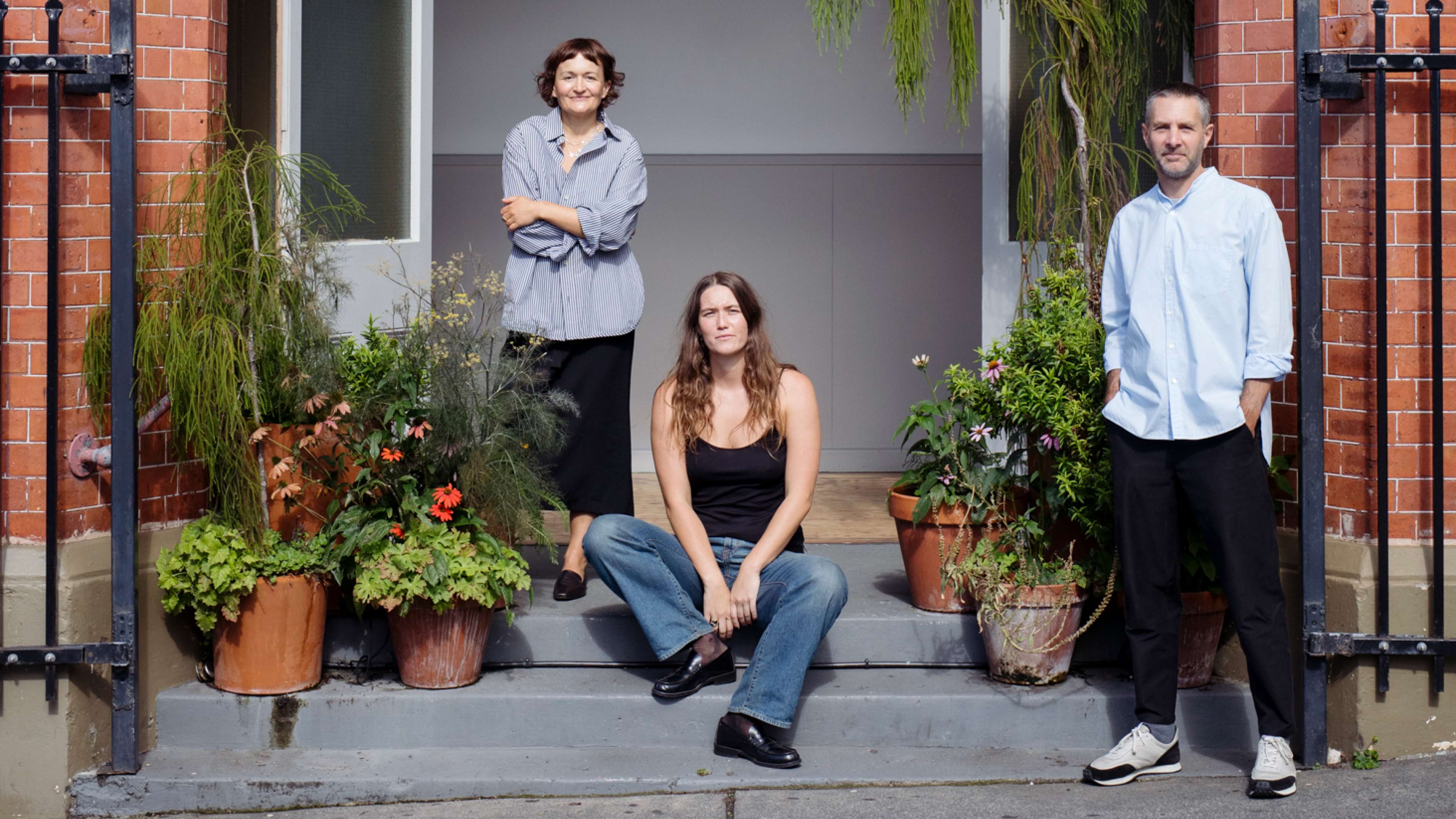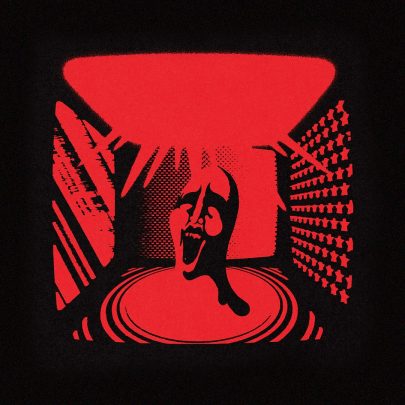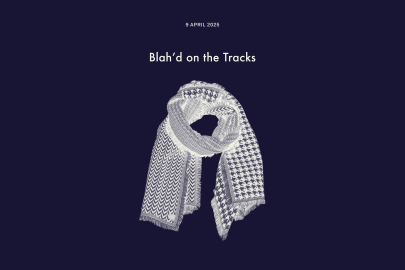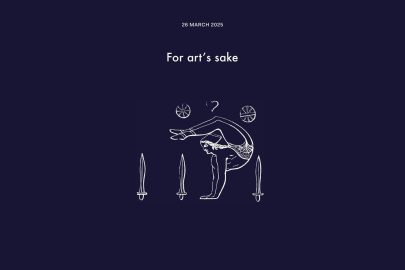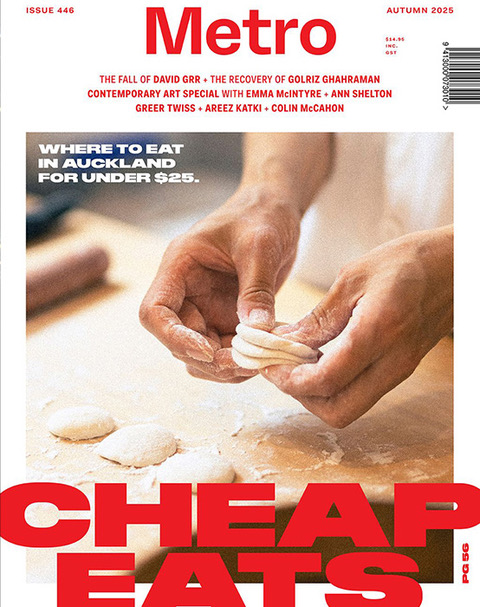Apr 30, 2025 Arts
Henry Oliver: Why start a new art fair in 2025?
Sarah Hopkinson: Andrew, Michael and I were having a casual beer, as gallerists do, and talking about the art fair that had just been and we started imagining how it could be different and perhaps better reflect the art world that we imagine ourselves to work in.
Andrew Thomas: Why not! It sounds silly to say when we’re talking about starting something new, but one reason is that there’s a bit of an over-supply of art fairs in this region — and globally — and if we think about Australia and New Zealand, there are now three annual art fairs [Aotearoa Art Fair, Sydney Contemporary and Melbourne Art Fair] of similar scale and ambition and booth price and tone. They all used to be biennial and they’ve all now chosen to go annual. So there are three fairs in a pretty small region…
SH: And a pretty small region that’s not yet infiltrated by international galleries or interests. Other fairs would have more international galleries coming to a regional fair, but somehow Australia and New Zealand remain very regional.
AT: So they’ve gone annual in a time when the market is struggling. Fairs are important — they work and there’s a reason they exist — but if you have too many, galleries can’t participate in all of them. Here, galleries have an appetite to participate but they can’t do Auckland, Sydney Contemporary and Melbourne all in one year. What we want to do is give galleries the opportunity to have a lot of the benefits of participating in a fair but change the value proposition, make it more affordable and more fun.
SH: With the over-supply of annual fairs, a lot of the Australian galleries have stopped coming to Auckland. Aotearoa Art Fair used to have way more Australian galleries and it was an opportunity for local collectors to see work by Australian artists. That all fed into growing an audience. Because the budgets are now tighter and there’s this over-supply, Auckland is too big of a risk, especially if they’re paying $20,000 for a booth. So if we made May really cheap, we believed some of those Australian galleries would come back. And they have. And I would hope that if they have a good experience they might consider coming back to Aotearoa Art Fair, but who knows?
AT: Two of those fairs are now owned by the same person, so it’s basically the same business. And part of the job of fairs is to grow the market for art but I can see it going down this more mainstream path where the focus is on art as a luxury commodity rather than art as something else…
SH: … a political object, or something!
AT: If you go too far down that direction it can just become like a super-yacht fair or something where participation is just based on how much money you have.
HO: What kind of an audience goes to an art fair that doesn’t go to your galleries? Who buys at an art fair who doesn’t buy at galleries?
SH: Heaps! There are a lot of people who do their buying once a year and that’s at the art fair, which acts as an aggregator of sorts — a one-stop shop to see everything all at once, and probably less intimidating than a gallery because it’s organised like a supermarket, essentially.
AT: We’ve always been surprised when we’ve participated in the Aotearoa Art Fair that we’ve met people that we didn’t know — people who choose to come to an art fair but never go to a gallery. But now that it’s annual, people who do come to the gallery and are our most interested and important clients don’t necessarily think of the art fair as a must-do thing.
SH: We have a really good idea of who our client is and it’s great to see thousands of people at the art fair but the people we’re usually selling to are people we already know anyway.
HO: But you’re paying for that privilege…
SH: Also, post-Covid, the Auckland art world has become less international. That’s not just what’s happening in fairs, it’s also what’s happening in institutions — there’s less investment from Creative New Zealand in bringing artists and curators here, less investment from the art schools in visiting artists, the Auckland Art Gallery doesn’t have the Triennial any more, which used to bring a whole tranche of artists over every three years. There’s a whole constellation of reasons why that is, but this is one way we can maybe open a window.
HO: What will be different about May? Other than the price for a booth…
SH: A lot smaller — it’s a bite-sized fair. The booths are occupying this incredible historical building. It’s going to be a journey of discovery — some of the booths are, like, under the stairs. The work on display will feel different in some cases. Some of the younger, more experimental galleries are participating very cheaply so they can take risks, they can show video, they can show weird installations.
AT: It’s shorter.
SH: And it’s free for the public! On the Saturday it’s free. Friday is the client-only day, Saturday is open to the public, Sunday is by appointment, so if there are groups that want to come through, they can.
HO: And it’s during the Aotearoa Art Fair?
SH: Yes, but we don’t clash with any of the major events. We’re not opening on the same night. We’re being very collegial.
AT: It’s not a diss to the other fair.
SH: It’s supposed to be additive, not oppositional.
AT: And it’s symptomatic of what happens in other cities that have art fairs — there tends to be these satellite fairs that pop up after a time. So it’s not new in that sense.
SH: It’s a small city, a small art world. It’s going to be really easy to get between the two. But the vibe is different.
HO: And are you both showing at May?
SH: We’re showing, and paying to show — it’s all very democratic. We’re showing Ammon Ngakuru. What are you showing, Andrew?
AT: We’re showing Dan Arps and Hany Armanious.
HO: And are you also participating in the Aotearoa Art Fair?
AT: We are not, but some of the participating galleries are.
SH: I always maintained that if we did it, Coastal Signs would only do Aotearoa every second year — turning it into a biennial for us. We have a small stable, run a super-tight ship, and we can’t be in the young section, so we have to be in the big section, which would be a bit of an outlay every year for us.
AT: I don’t think you’re alone either. Some of the best galleries only want to do it every two years and they don’t do it the same years so it dilutes the quality.
HO: If art fairs can provide an all-in-one-spot snapshot of what’s going on in the art world at a single point in time, the obvious question is: what is going on in the local art world at the moment?
AT: No one wants to answer that honestly.
SH: I think everybody agrees it’s tough at the moment. It’s not buoyant.
AT: Artists are making great work, and that’s the main thing. But there’s a lot not to like about what’s happening in the art world in New Zealand at the moment.
SH: One of the most glaring things for me is that there aren’t many young galleries that are thriving and that’s a sign of something wrong with the system, if people don’t want to, or don’t feel it’s a viable business to start. Because there was a fairly clear trajectory for a while — Michael [Lett] worked for John [Gow] and Gary [Langsford], Andrew worked for Hamish [McKay], Robert [Heald] worked for Ivan [Anthony], I worked for Michael [Lett], Melanie Roger worked for Gow Langsford — everyone opened their own gallery. There was quite a long lull and something has changed. So there’s a few generations of artists that are underrepresented. I’ve noticed that people have started to think of young artists as in their early 30s, whereas I’d think of them as early 20s, but no one’s seeing that work.
AT: Institutions aren’t showing it, institutions aren’t buying it. Our national gallery isn’t showing any art, really…
SH: Or buying any art that can be stored anywhere… How long have you got, Henry?
AT: Last year, Mataaho Collective won the Golden Lion, possibly the most successful foray to Venice…
SH: And it wasn’t even sent by us! [The Mataaho Collective’s winning work, Takapau, was commissioned by Te Papa Tongarewa in 2022 and selected for the main exhibition of the 2024 Venice Biennale by curator Adriano Pedrosa, along with work by four other Aotearoa New Zealand artists. New Zealand did not have its own country pavilion at Venice in 2024, but will be represented by Fiona Pardington in 2026.]
AT: … and that’s not really celebrated back here. That success doesn’t feel like it’s echoed by what’s happening on the ground.
SH: Our generation, when we were coming through, CNZ had strategic objectives to support New Zealand artists going overseas to achieve international success and get money for that — for Kate [Newby] to go overseas, for Simon [Denny] to go overseas, for Luke [Willis Thompson] to go overseas, whoever… Pick any of the ones that have had international success… Those resources aren’t going to the same places at the moment. Which is not to say that there aren’t artists doing very well overseas; there’s just not the same focus on that, and we’re starting to see the impact of that now.
HO: What effect does that have on the production level? If there are fewer younger galleries, and fewer young artists exhibiting, are there still a lot of young people who want to be artists?
Sally McMath: Almost everyone I know goes to art school…
SH: But it’s just hard to see the pathway beyond it…
SM: I think people find it really hard to find where their work lines up today. And I think that sometimes those who do get picked up right after art school come into these relationships with galleries and there’s a certainty or security in the way that work is read and sometimes that’s almost stilted the way that their work has developed, because they get picked up, they get confidence in a certain type of work.
SH: It’s tricky, because often they get picked up by more established galleries — whether that’s Gow Langsford or Ivan Anthony or whoever — and that’s quite different from a gallery that’s focused on representing a generational moment.
AT: Auckland has a pretty good history of really great artist-run spaces that have filled that gap, but that hasn’t really been happening in recent years.
SH: There’s a few, but they’ve really struggled to stay open in a consistent way. They don’t have the longevity at the moment because it’s quite tough…
HO: I think about this a lot in the media sector at the moment. If you’re young and talented and curious, who’d look at our industry and think, that’s where I want to be?
SH: I can understand why no one wants to be an art dealer. And, in good conscience, could we recommend it? But for artists, a lot of people are artists because that’s what they’ve always been and there’s no other choice for them. But coming back to the market, my main concern is that with the lack of visibility for younger practices and this idea that young is getting older, I think that the market has become more conservative in the last few years — less inclined to take risk, less interested in young artists’ work — which is all pretty disappointing. And part of that is economic, but part of that is a lack of visibility and a lack of discourse around younger practices. Like, a lot of the market feels very disconnected from what’s happening a couple of years out of art school and seems to be organising more around safe bets, which is not a surprise considering the economy.
And I think May will help with that. All the galleries that are coming are very serious — serious about what they show, and serious about selling — and it’s hopefully going to allow a space for people to realise you can have both. Something that is a valuable commodity and a critical object.
AT: You can have both!
May Art Fair is on 2–4 May at 3 East St, Tāmaki Makaurau Auckland. www.mayartfair.com

